8 Spectacular Caterpillars That Look Like Snakes
Gaze into the (fake) eyes of these caterpillars with decidedly snake-like features to get a glimpse into Mother Nature's sly side.
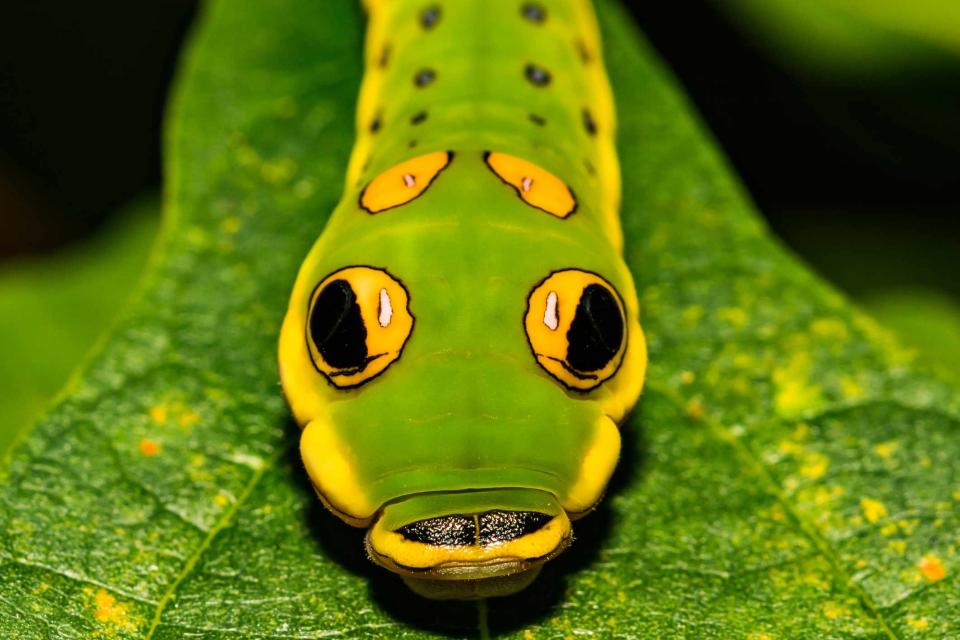
JasonOndreicka / Getty Images
This spicebush swallowtail caterpillar on a leaf looks very snake-like.Welcome to the wonderful world of mimicry, in which animals adapt over time to develop novel features that allow them to appear like something they are not. Whether with their fake eyes or pretend horns, these snake-mimic caterpillars are able to ward off many a predator—which is a handy trick to have when you are a slow-moving, bite-sized bundle of protein!
Red Helen Swallowtail Caterpillar
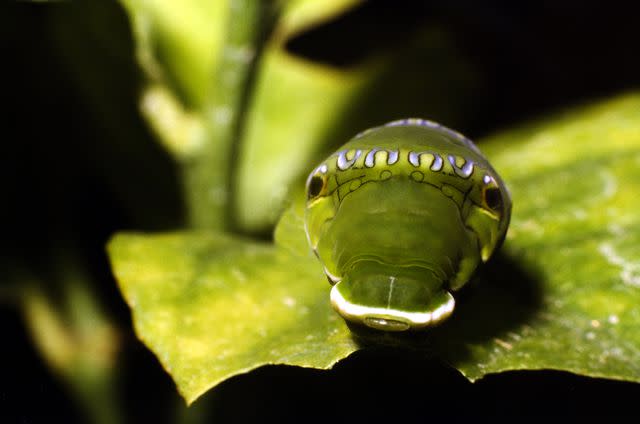
wiljoj / Getty Images
Found in the forests of India and southeast Asia, in its larval state, the red Helen swallowtail caterpillar looks like an ominous green snake. The caterpillar has another defense as well. When irritated, it can produce a two-pronged hornlike defensive organ called an osmeterium that puts out a foul-smelling liquid to deter predators. At maturity, that same snake-like caterpillar transitions into a beautiful swallowtail butterfly. In its butterfly state, the red Helen swallowtail is mostly black in color, with distinctive white spots and red details on its wings.
Spicebush Swallowtail Caterpillar
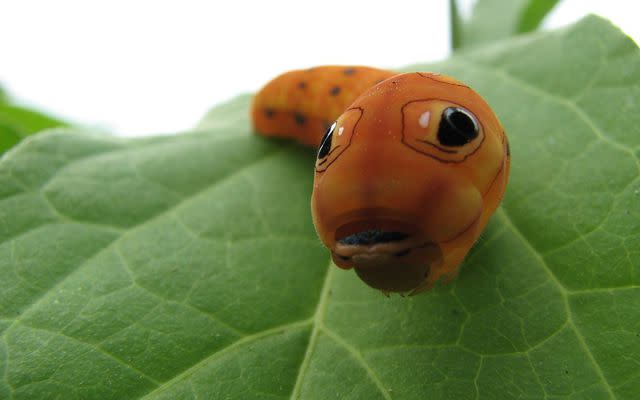
Michael Hodge / Wikimedia Commons / CC BY 2.0
Hello, handsome. The spicebush swallowtail caterpillar goes through several stages and color changes on its way to becoming a butterfly. The snake stage occurs when what appears to be large eyes are displayed on the caterpillar’s thorax. The spicebush swallowtail turns orange or yellow just before it pupates. Found mostly in the eastern half of the U.S., adult butterflies are primarily black with rows of light green or blue spots along the edge of their wings.
Great Orange Tip Caterpillar
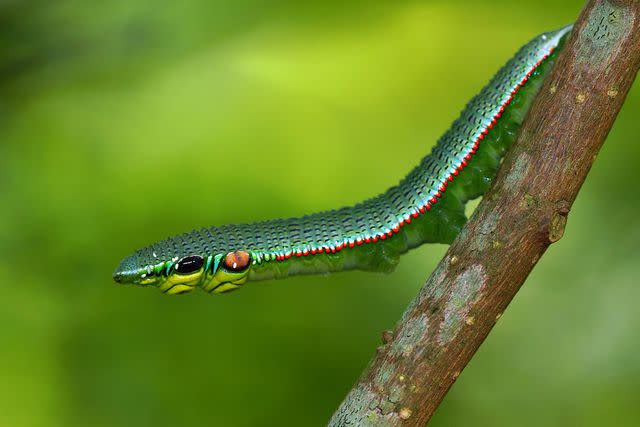
Peellden / Wikimedia Commons / CC BY-SA 4.0
Along with fake snake eyes and markings, snake-mimicking caterpillars will also duplicate their muses' behavior as well, adding some extra flourishes to their arsenal of snake tricks. The great orange tip caterpillar lifts its head in a snake pose like it is planning to attack. The markings on the great orange tip caterpillar are snake-like as well, with a red stripe down its side and orange and blue markings on its head. Found in south and southeast Asia, China, and Japan, once the great orange tip becomes a butterfly, it is predominantly white with bright orange and black on the outer third of its wings.
Jade Hawk-Moth Caterpillar
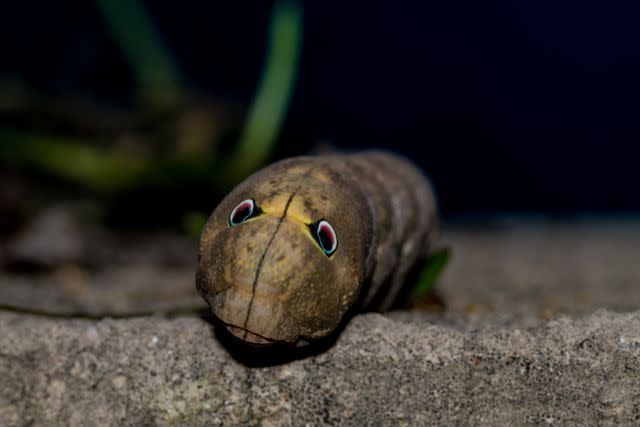
This member of the Sphingidae sub-family is found primarily in Sri Lanka, India, Nepal, Myanmar, southern China, Taiwan, Thailand, Malaysia, and Indonesia. While in the larval stage, this fearsome—well, maybe more cute than scary—caterpillar is green with tiny yellow dots and a reddish band on both sides. The mature moth has patterned wings that are a mixture of brown, olive green, and red. The jade hawk-moth is known to be a fast flyer and is particularly attracted to bright light and sweet-smelling flowers.
Elephant Hawk-Moth Caterpillar
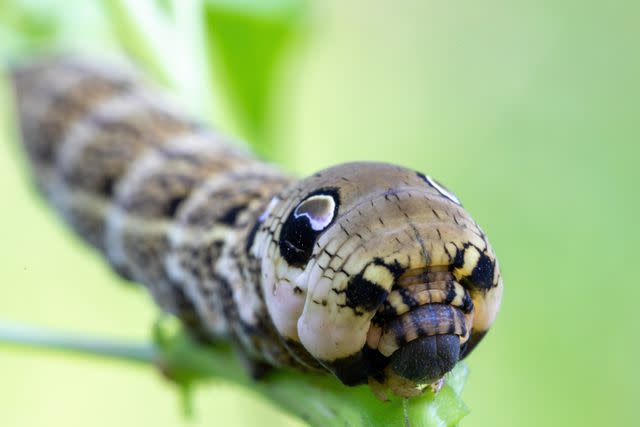
Elephant hawk-moth larvae resemble elephant trunks. The caterpillars are typically dark brown with large eye spots, but they may also be found in green coloration. In adulthood, the elephant hawk-moth becomes beautiful shades of gold and pink. The moths are nocturnal and feed mostly on honeysuckle. The elephant hawk-moth is found throughout England, Wales, and Ireland, as well as in the U.S. Pacific Northwest.
Eastern Tiger Swallowtail Caterpillar
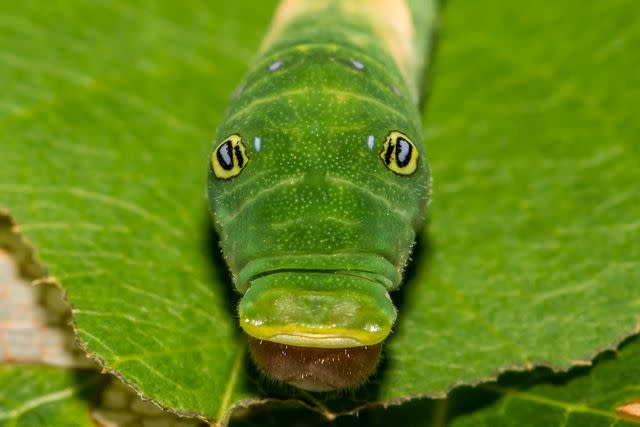
JasonOndreicka / Getty Images
The eastern tiger swallowtail is found throughout eastern North America. In its caterpillar stage, the eastern tiger swallowtail prefers the leaves of birch, wild cherry, and sweetbay magnolia trees. As an adult butterfly, the eastern tiger swallowtail enjoys flower nectar from milkweed and lilacs. Eastern swallowtail butterflies are identified by their yellow wings with dark tiger stripes.
Bonus trivia: A swallowtail caterpillar like this was the inspiration for the Pokemon Caterpie.
Silver-Spotted Skipper Caterpillar
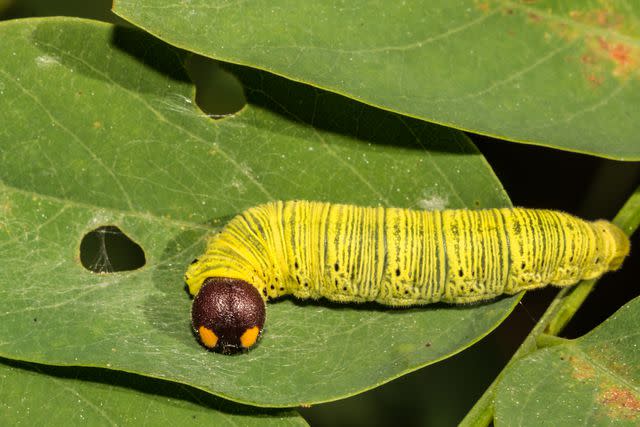
JasonOndreicka / Getty Images
We'd suggest that this caterpillar is in the early phases of its evolutionary journey to becoming super snake-like, but with those big orange eye spots, it's getting there! Found throughout the U.S. and southern Canada, the silver-spotted skipper caterpillar is identified by its dark reddish brown head and yellow-orange eye patches. The body of the larvae is yellow, and the prolegs are a vivid orange. The adult silver-spotted skipper butterfly has a wingspread of up to 2 1/2 inches and has a large white spot on the underside of each wing.
Sphynx Moth Caterpillar
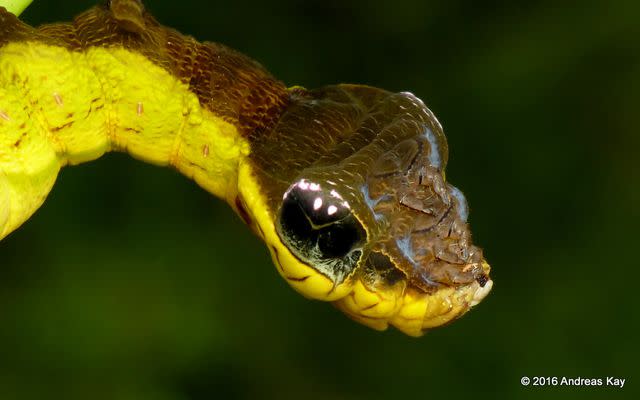
Andreas Kay / flickr
The photo above depicts Hemeroplanes triptolemus, Sphingidae, hailing from the Amazon rainforest near Puyo, Ecuador. "When disturbed, this larva of a sphinx moth expands and exposes the underside of the first body segments, mimicking a snake head with black eyes and even light reflections," explains photographer Andreas Kay. The glints of light in the eyes are masterful! It will also sometimes perform a striking action, like a snake, to deter predators such as lizards or birds.

